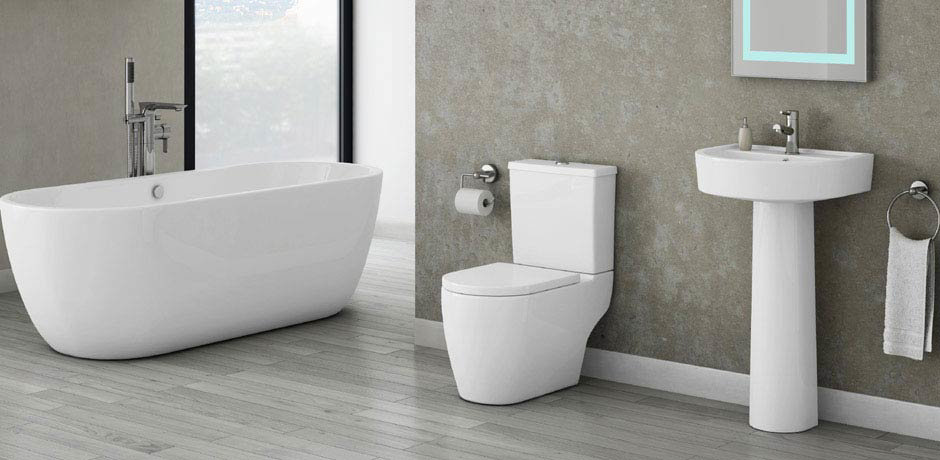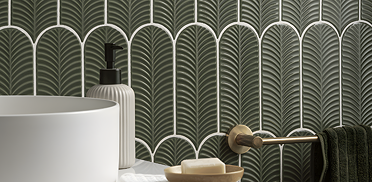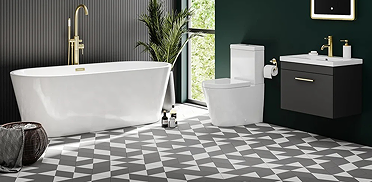OUR WINTER SALE ENDS SOON!
*Boxing Day deals coming soon. Free delivery on orders over £499
Keeping Your Bathroom Safe
Keeping Your Bathroom Safe
Tips to help keep you safe in the bathroom.

Jump to a section of this post by clicking a link above.
When decorating, it's easy to get carried away about the design and the vision of what the room will look like once it is finished. Although safety is a big issue, it probably doesn’t have the same level of consideration in some instances.
It is important to keep your home safe by having electrical safety as an absolute paramount, especially in the bathroom. The best way to do this is by making sure water and electrics don’t come in contact with each other to avoid serious injury.
Whether you are decorating your current home or buying a new one, we’ve rounded up some areas for you to consider keeping an eye on to help keep you safe.
Lighting
When choosing a light in your bathroom, safety needs to be kept in mind. Lighting for this area is strictly monitored. Each light fitting for bathroom use is given an IP rating that correlates to the level of water resistance. All bathroom lighting should have a minimum rating of IP44.
A bathroom is divided into three zones, which are 0, 1 and 2. Depending on which zone you would like your lighting, the IP rating will vary in rating to ensure electrical safety for that zone. Only use the correct IP rating for the relevant zone. See our previous blog post for more information on this area. See our previous blog post for more information on this area.
Light switches should be installed on the outside of the bathroom, to avoid contact with damp/wet hands, and a ceiling mounted pull cord switch is acceptable inside the bathroom to avoid the possibility of electric shock.
There are specific shaver sockets that are designed for bathroom use and must be kept at least 60mm away from your shower/bath. We recommend using a socket cover if you have these in your bathroom to prevent water from entering the electrical source when not in use.
All other sockets should be kept outside the bathroom and the minimum requirement is three meters away from the edge of your bath/shower.
Mains powered portable electrical appliances
These items should not be brought into your bathroom as they can turn ‘live’ if condensation from bathroom steam gets into the appliance. Prevent any serious injury to either yourself or family by keeping these out of your bathroom.
Shower
An electric shower must be supplied on its own circuit from your fuse-box to prevent the water from turning ‘live’.
Wiring
If you notice any damaged wires, we recommend that get a professional electrician to fix it as soon as they are noticed.
We hope you have found these tips helpful. If you have any safety tips that you would like to share with use, don’t forget to send them over!
Please note that these are guidelines. If you have any concerns about the electrical safety of your bathroom double check section 701 BS 7671:2008, and Part P of the Building Regulations (UK residents only).

Ally
Ally is one of our bathroom bloggers here at Victorian Plumbing. She'll be posting updates on the latest bathroom trends and decorating tips. Look out for her bathroom buying guides and expert 'how to' step-by-step DIY guides.


